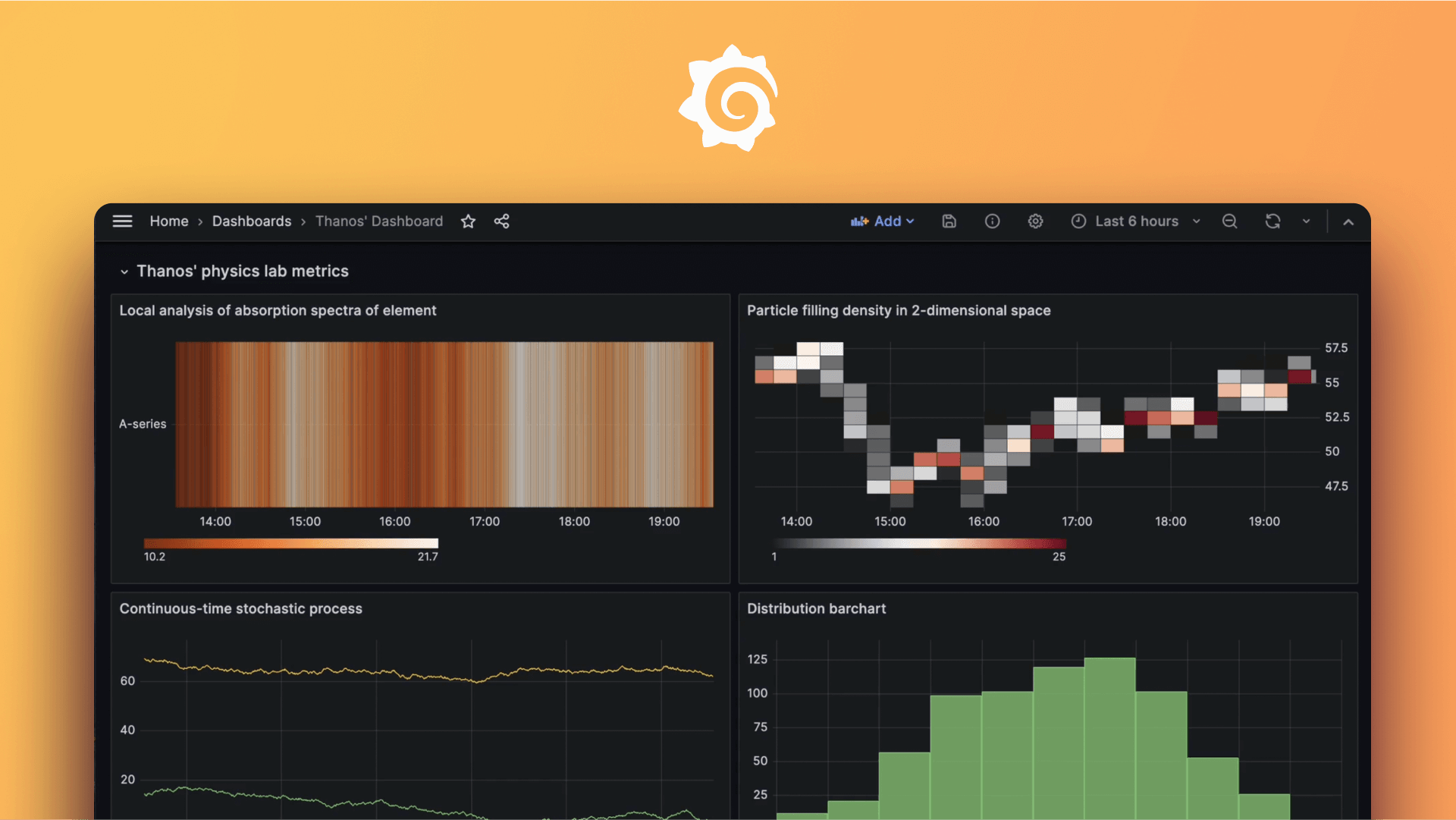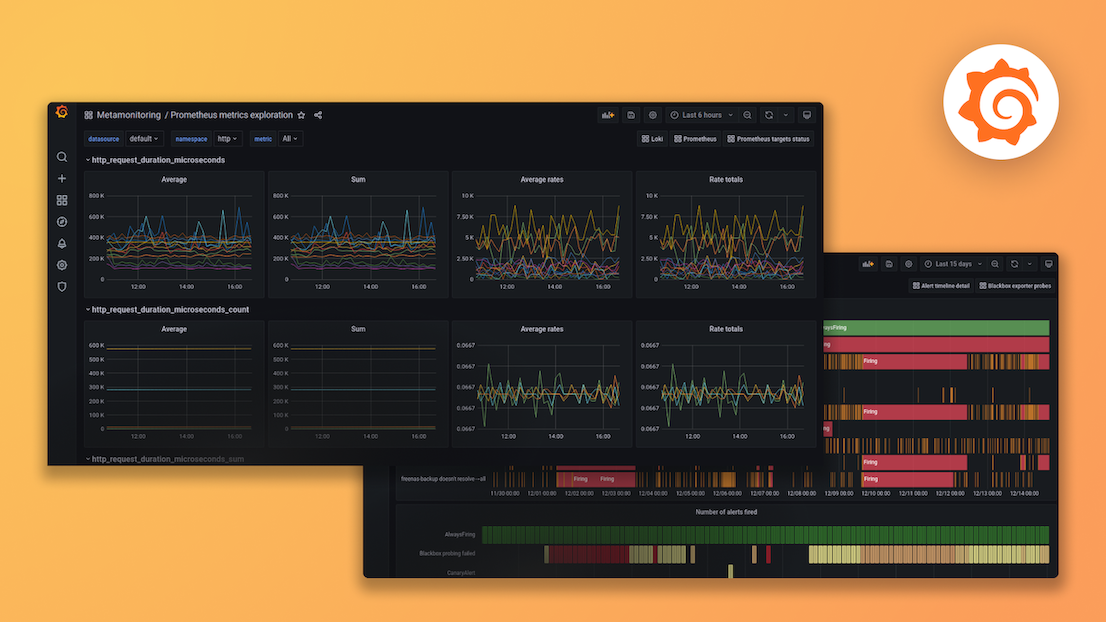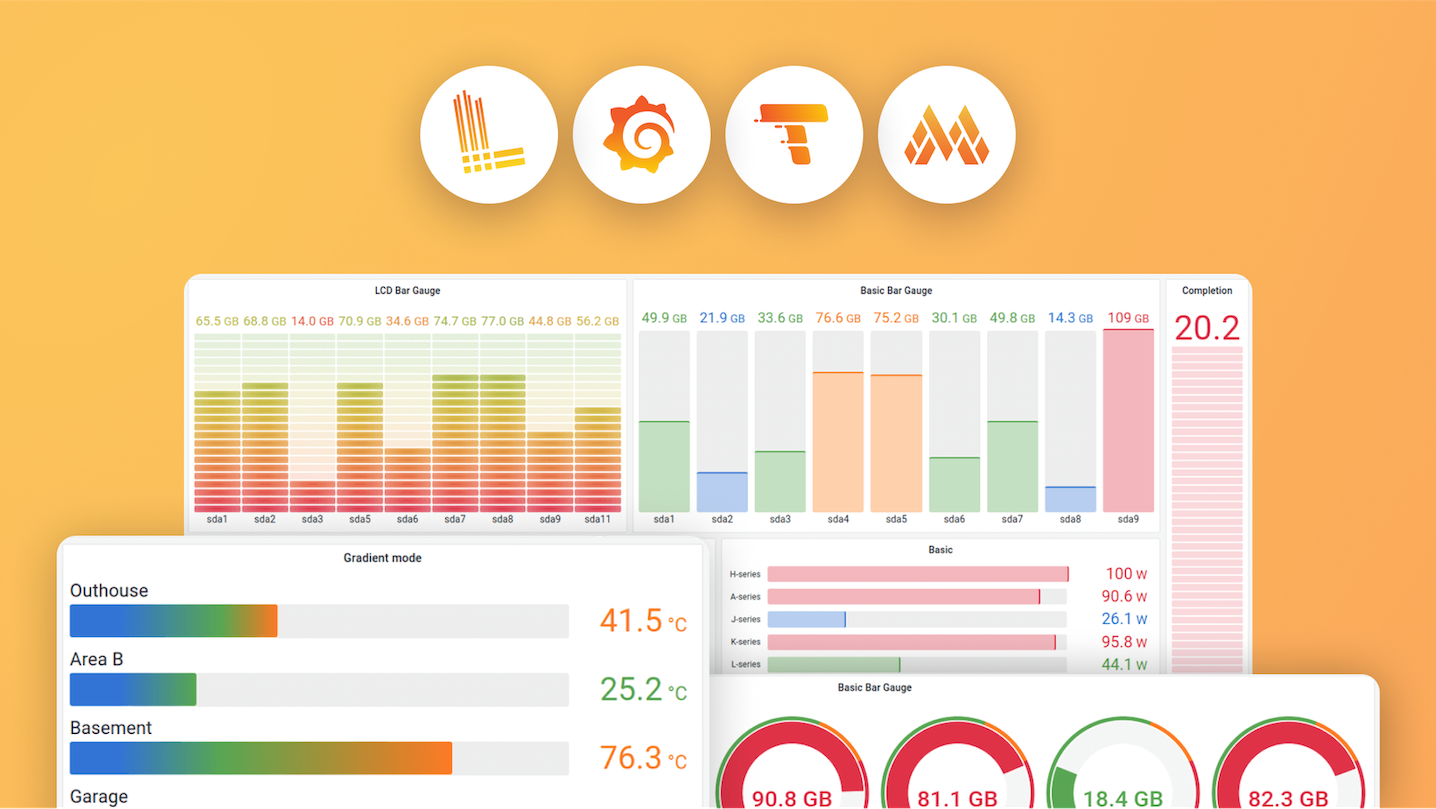Plugins 〉Business Satellite
Business Satellite
Business Satellite Data Source for Grafana

Introduction
The Business Satellite Data Source for Grafana allows retrieving data from local and remote Grafana instances via HTTP API.
Requirements
- Business Satellite Data Source 3.X requires Grafana 10 or Grafana 11.
- Grafana HTTP API Data Source 2.X requires Grafana 9 and Grafana 10.
- Grafana HTTP API Data Source 1.X requires Grafana 8.5 and Grafana 9.
Getting Started
The Business Satellite Data Source can be installed from the Grafana Catalog or utilizing the Grafana command line tool.
For the latter, use the following command.
grafana-cli plugins install volkovlabs-grapi-datasource
Authentication
The Business Satellite Data Source requires a Grafana URL and a Token or API key to establish the connection to the organization and get relevant data.
Highlights
- Connects to Local and Remote Grafana instances via HTTP API using API Keys and Tokens.
- Allows to get Health information.
- Allows to retrieve Annotations, Alerts, and Data Sources.
Documentation
| Section | Description |
|---|---|
| Configuration | Explains configuration settings for the Data Source. |
| Provisioning | Demonstrates how to automatically provision the Data Source. |
| Features | Demonstrates panel features. |
| Release Notes | Stay up to date with the latest features and updates. |
Business Suite for Grafana
The Business Suite is a collection of open source plugins created and actively maintained by Volkov Labs.
The collection aims to solve the most frequent business tasks by providing an intuitive interface with detailed written documentation, examples, and video tutorials.
Feedback
We're looking forward to hearing from you. You can use different ways to get in touch with us.
- Ask a question, request a new feature, and file a bug with GitHub issues.
- Subscribe to our YouTube Channel and add a comment.
- Sponsor our open-source plugins for Grafana at GitHub Sponsor.
- Support our project by starring the repository.
License
Apache License Version 2.0, see LICENSE.
Grafana Cloud Free
- Free tier: Limited to 3 users
- Paid plans: $55 / user / month above included usage
- Access to all Enterprise Plugins
- Fully managed service (not available to self-manage)
Self-hosted Grafana Enterprise
- Access to all Enterprise plugins
- All Grafana Enterprise features
- Self-manage on your own infrastructure
Grafana Cloud Free
- Free tier: Limited to 3 users
- Paid plans: $55 / user / month above included usage
- Access to all Enterprise Plugins
- Fully managed service (not available to self-manage)
Self-hosted Grafana Enterprise
- Access to all Enterprise plugins
- All Grafana Enterprise features
- Self-manage on your own infrastructure
Grafana Cloud Free
- Free tier: Limited to 3 users
- Paid plans: $55 / user / month above included usage
- Access to all Enterprise Plugins
- Fully managed service (not available to self-manage)
Self-hosted Grafana Enterprise
- Access to all Enterprise plugins
- All Grafana Enterprise features
- Self-manage on your own infrastructure
Grafana Cloud Free
- Free tier: Limited to 3 users
- Paid plans: $55 / user / month above included usage
- Access to all Enterprise Plugins
- Fully managed service (not available to self-manage)
Self-hosted Grafana Enterprise
- Access to all Enterprise plugins
- All Grafana Enterprise features
- Self-manage on your own infrastructure
Grafana Cloud Free
- Free tier: Limited to 3 users
- Paid plans: $55 / user / month above included usage
- Access to all Enterprise Plugins
- Fully managed service (not available to self-manage)
Self-hosted Grafana Enterprise
- Access to all Enterprise plugins
- All Grafana Enterprise features
- Self-manage on your own infrastructure
Installing Business Satellite on Grafana Cloud:
Installing plugins on a Grafana Cloud instance is a one-click install; same with updates. Cool, right?
Note that it could take up to 1 minute to see the plugin show up in your Grafana.
Installing plugins on a Grafana Cloud instance is a one-click install; same with updates. Cool, right?
Note that it could take up to 1 minute to see the plugin show up in your Grafana.
Installing plugins on a Grafana Cloud instance is a one-click install; same with updates. Cool, right?
Note that it could take up to 1 minute to see the plugin show up in your Grafana.
Installing plugins on a Grafana Cloud instance is a one-click install; same with updates. Cool, right?
Note that it could take up to 1 minute to see the plugin show up in your Grafana.
Installing plugins on a Grafana Cloud instance is a one-click install; same with updates. Cool, right?
Note that it could take up to 1 minute to see the plugin show up in your Grafana.
Installing plugins on a Grafana Cloud instance is a one-click install; same with updates. Cool, right?
Note that it could take up to 1 minute to see the plugin show up in your Grafana.
Installing plugins on a Grafana Cloud instance is a one-click install; same with updates. Cool, right?
Note that it could take up to 1 minute to see the plugin show up in your Grafana.
For more information, visit the docs on plugin installation.
Installing on a local Grafana:
For local instances, plugins are installed and updated via a simple CLI command. Plugins are not updated automatically, however you will be notified when updates are available right within your Grafana.
1. Install the Data Source
Use the grafana-cli tool to install Business Satellite from the commandline:
grafana-cli plugins install The plugin will be installed into your grafana plugins directory; the default is /var/lib/grafana/plugins. More information on the cli tool.
Alternatively, you can manually download the .zip file for your architecture below and unpack it into your grafana plugins directory.
Alternatively, you can manually download the .zip file and unpack it into your grafana plugins directory.
2. Configure the Data Source
Accessed from the Grafana main menu, newly installed data sources can be added immediately within the Data Sources section.
Next, click the Add data source button in the upper right. The data source will be available for selection in the Type select box.
To see a list of installed data sources, click the Plugins item in the main menu. Both core data sources and installed data sources will appear.
Change Log
3.1.0 (2024-07-16)
Features / Enhancements
- Updated minimum Grafana version to 10.1.0 (#72)
- Added get dashboards meta request (#70)
- Added data source health check (#71, #73)
3.0.0 (2024-07-11)
Breaking changes
- Requires Grafana 10.1 and Grafana 11
Features / Enhancements
- Update Tutorial in README (#57)
- Update ESLint configuration and refactoring (#61)
- Add plugin e2e tests and remove cypress (#64)
- Prepared for Grafana 11 (#66)
- Updated E2E tests to use Docker (#68)
- Updated to Grafana 11.1.0 dependencies (#60, #69)
2.2.0 (2023-09-19)
Features / Enhancements
- Move API methods under feature flag to support various Grafana versions (#53)
- Add an option to disable Alert Rules in Annotations (#55)
- Add a values field from annotation text (#30)
2.1.0 (2023-09-10)
Features / Enhancements
- Refactor API and increase test coverage (#50)
- Update ESLint configuration (#50)
- Add Local mode to access local instance (#51)
- Add Organization Users (#52)
2.0.0 (2023-07-17)
Breaking changes
- Requires Grafana 9 and Grafana 10
Features / Enhancements
- Update to Grafana 10.0.2 (#31, #40, #45, #47)
- Add Annotations Tutorial to README (#33)
- Add Authentication to Getting Started (#36)
- Add exception handling for Alert Rules in Annotations (#39)
- Update tests with testing-library/react (#42)
- Add tests for Components and datasource (#44)
- Migrate to Plugin Tools 1.5.2 (#45)
- Update to Node 18 and npm (#45)
- Add E2E Cypress testing (#48)
1.2.0 (2023-03-30)
Features / Enhancements
- Add formatted Annotation labels for Alerts (#19)
- Update Annotation Limit to 100 by default (#19)
- Add Alert Rules and UID for Alerts Annotations (#20)
- Update Scoped Variables for Annotations (#21)
- Add Variable Support (#25)
- Update provisioning for testing Alerts (#26, #28)
- Add Annotations Tutorial (#29)
1.1.0 (2023-03-15)
Features / Enhancements
- Update to Grafana 9.4.3 (#13)
- Update Bearer token plugin configuration (#13)
- Signed as community plugin (#14)
- Update Grafana types and description (#15)
1.0.0 (2023-03-02)
Features / Enhancements
- Initial release based on Volkov Labs Abc Data source template
- Update README and configuration (#1)
- Add Postgres for Alerting (#2)
- Add Annotations (#3)
- Update name to Grafana HTTP API (#4)
- Improve Annotations and update to Timescale (#5)
- Improve Data Source to check Organization (#6)
- Add Notifications and increase Test Coverage (#7)
- Add Annotation filters (#8)
- Add Annotation Alert States filter (#9)
- Add Health and Data Sources (#10)
- Update README to prepare for the release (#11, #12)







